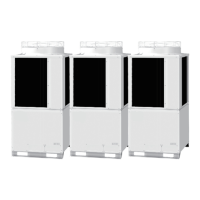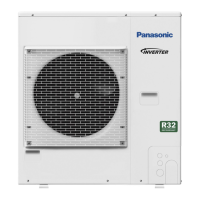What causes dewdrop formation on my Panasonic Air Conditioner?
- GGrant CrosbySep 12, 2025
The indoor moisture is cooled by cool wind and accumulated by dewdrop.

What causes dewdrop formation on my Panasonic Air Conditioner?
The indoor moisture is cooled by cool wind and accumulated by dewdrop.
Why does my Panasonic U-10ME1E81 fan keep running after I turn it off?
The fan may continue to rotate after operation stops to ensure smooth operation and to dry the heat exchanger, depending on the settings.
What causes noise in my Panasonic Air Conditioner unit?
This sound may be caused by the sound of refrigerant liquid flowing inside the unit or the sound of drainage water through the drain pipe. Also, a cracking sound can occur due to temperature changes of parts.
Why is the wind direction changing on my Panasonic Air Conditioner and I can't adjust it?
Your Panasonic Air Conditioner may automatically adjust to a horizontal wind flow when the air discharge temperature is low, or during defrost operation. Also, the flap position is occasionally set up individually.
Why does the flap on my Panasonic Air Conditioner move several times and then stop when I change the wind direction?
When the wind direction changes on your Panasonic Air Conditioner, the flap operates after searching for a standard position.
Why is the fan still running after I turn off my Panasonic Air Conditioner?
If your Panasonic Air Conditioner's fan continues to rotate even after it stops operating, this is normal. This function helps to ensure smooth operation. Also, the fan may sometimes rotate to dry the heat exchanger due to settings.
What to do if I see fog coming from my Panasonic U-10ME1E81 Air Conditioner?
During defrost operation, fog may be observed. Additionally, if the unit inside (heat exchanger) is dirty, cleaning is necessary. It's recommended to consult with your dealer, as technical engineering is required.
Why does the fan on my Panasonic U-10ME1E81 keep running after I turn it off with the remote?
The fan may continue to rotate for a short period even after you stop the Panasonic Air Conditioner with the remote. This is normal and helps ensure smooth operation.
Why is the outdoor unit fan on my Panasonic U-10ME1E81 Air Conditioner still running after I turn it off with the remote?
Fan rotating makes operation smoothly.
Why does the fan on my Panasonic U-10ME1E81 rotate faster than the setting speed at the initial high-speed operation?
This happens for operation check in order to confirm whether the fan motor rotation is within use range.
| Brand | Panasonic |
|---|---|
| Model | U-10ME1E81 |
| Category | Air Conditioner |
| Language | English |
Explains symbols used to alert users to potential hazards.
Recommends qualified technicians and voltage checks for proper installation.
Warns against installing near flammable gases or in humid/hot environments.
Details requirements for wiring, grounding, and qualified electricians.
Instructs to turn power mains on for at least five hours before operation.
Covers hazards like refrigerant, wet hands, flammable vapors, and explosive atmospheres.
Addresses safe operation, avoiding obstructions, and proper handling.
Specifies R410A refrigerant and its Global Warming Potential (GWP).
Outlines recommended indoor/outdoor temperature ranges for cooling and heating modes.
Provides guidance on proper disposal of electrical products and batteries.
Identifies key parts of the indoor units, including control panels and louvers.
Refers to separate instructions for the optional wireless remote controller.
Explains the functions of buttons like Start/Stop, Mode Select, Fan Speed, and Temperature settings.
Describes the group control feature for operating multiple indoor units with one controller.
Details how to use the FLAP button for manual and swing airflow adjustments.
Shows initial and continuous settings for airflow direction in different modes.
Explains auto flaps and setting airflow for Y2 type units.
Details vertical (automatic) and horizontal (manual) airflow adjustments for K2 type.
Guides on setting airflow for individual units or all units under group control.
Explains how the DRY mode operates, including fan speed and temperature limits.
Discusses heating efficiency, defrosting, and standby indicators during heating.
Provides safety warnings and instructions for cleaning indoor and outdoor units.
Covers cleaning agents, methods for panels, fins, and filters.
Explains when to clean filters and how to reset the filter indicator.
Lists common indoor unit symptoms like noise, odor, dewdrop, fog, and dust with their causes.
Lists common outdoor unit symptoms like no operation, noise, and steam with their causes.
Outlines checks for non-operation and poor performance before calling service.
Provides advice on preventing obstructions, sunlight, filter cleaning, and closing openings.
Details specifications for K2 and Y2 type air conditioners.
Provides technical data for LE1 Mini type units (single and 3-phase).
Lists technical specifications for 2WAY ME1 type air conditioners.
Details technical specifications for 3WAY MF1 and MF2 type air conditioners.












